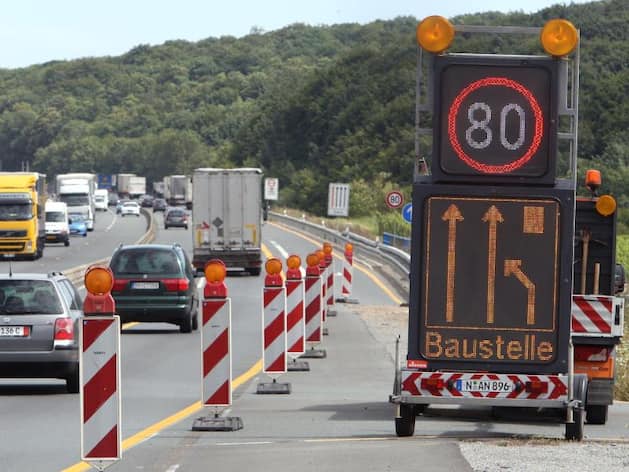There is a risk of fines in many motorway construction sites, because most cars are simply too big to drive in the left lane. Currently, only vehicles up to two meters wide are allowed to use the left lane, regulated by traffic sign 264.
Many car drivers are not aware that even some compact cars are not allowed to drive here. Because the width information is often given without exterior mirrors. With mirrors, even a VW Golf is 2027 mm wide.
The two-meter limit is displayed with a red-framed traffic sign, even though construction sites are now increasingly being designed for vehicle widths of 2.10 meters. Car owners should not determine whether they are allowed to drive in the left lane with their own vehicle based on the data in the vehicle registration document. This is because only the exterior width without exterior mirrors is specified there, while the road traffic regulations assume the actual total width of a car including the exterior mirrors.
However, the actual width of the car with exterior mirrors can be found in the data sheets of the car manufacturer on their website (look there in the search field for “Technical Data” or “Price List”, possibly as a PDF document) or in the car’s operating instructions.
A few years ago, car data expert Schwacke measured many current models and found that the majority of cars are not allowed to drive on narrow lanes with a permitted width of two meters. Cars like the Ford Focus or Hyundai i30 are also too wide for construction site lanes, and VW Golf or Opel Astra are also not actually allowed to overtake. The flood of SUVs in recent years has again greatly increased the number of candidates who are too wide.
The left lane is also taboo for SUVs such as the Porsche Cayenne, Mercedes M-Class, BMW X5/X6, but also the Ford B-Max. The vehicles are too wide for these requirements. The same applies to many SUVs from Skoda, Hyundai or Mazda.
Incidentally, anyone who disregards the prescribed maximum width risks a fine of 20 euros. If the driver of a car that is too wide is involved in an accident, the casco protection can even be restricted. In addition, the compensation from the opposing liability insurance company can be reduced due to complicity.
